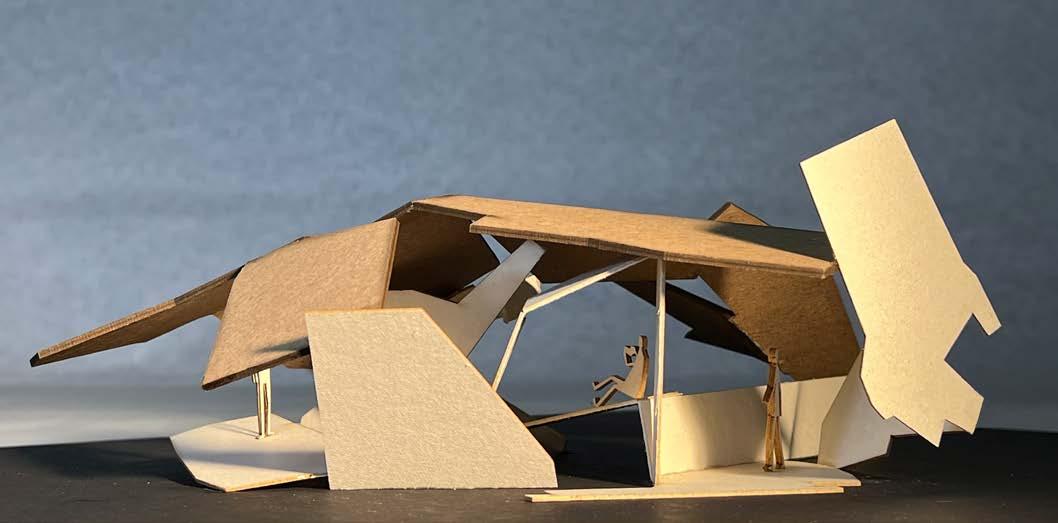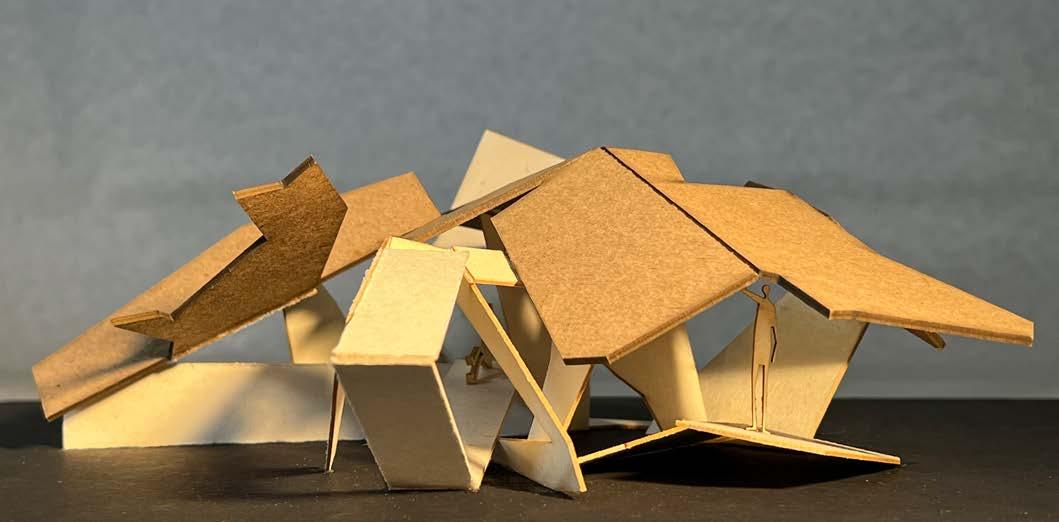
2 minute read
AD HOC ASSEMBLY
Deconstructing the Prototype: ADIRONDACK BENCH
The Adirondack bench is deconstructed into 6 components for reconstruction to accommodate possible interactions people might have with the ad hoc assembly.
Advertisement
Possible Interactions
Individuals could have different interactions with the Adirondack bench, which may function as a bench, a table, a stool, or a recliner, after various heights are determined based on the components of the Adirondack bench.
The Social System
The chosen social system includes a group of students chatting in front of the law library. Every individual plays a role in changing the pattern of the social system as they spontaneously connect with or separate from each other. The ad hoc assembly could intentionally guide individuals to form groups that align with the pattern of the original social system, “reorienting” the space they occupy.
CUT trans fo rmation code: Z
Situation 3: SEGREGA TION
RO TA TION transf ormation code: Y
Situation 2: REARRANGEMENT
DIS TO RTION transf ormation code: X
Cu t will break the continuity of an obje ct , which could be used to indicate subgroups.
Rotation is a translational motion, which parallels the phenomenon that individual interac tions within the subgroup will not change its pattern
Situation 1: UNION
Distor tion will either expand or shrink the obje ct , which is similar to the pattern that individuals within the social system will spontaneously fo rm several subgroups that will change over time.
Translating the Social Pattern
The group interactions within the social system can be categorized as three situations: union, rearrangement, and segregation. Then three transformation methods are corresponded to these situations: distortion, rotation, and cut. The ad hoc assembly is arranged based on the overall pattern of the social system, forming a sort of landscape within the social group that connects individuals.
Assembly
The number assigned to speci fi c components can be interpreted as the following:
Form (A-J) + Deconstructed components (1-6) + Transformation methods (XYZ)
For example, A3YXXZ means In form A, component 3 is rotated, then distorted, and distorted again, and finally cut. Then, all the reconstructed components are assembled.
After the Adirondack bench is deconstructed into several components, different transformation methods are applied to indicate the specific changes/interactions within the social system. The deconstructed components then will be reconstructed into new forms, labelled with a unique number to indicate the specific transformation methods applied to them.
The Altered Social System
The ad hoc assembly will then diversify the interactions within the social group, either making them more organized or chaotic.
A Variance from the Ad Hoc Assembly...
The ad hoc assembly can evolve into a more complicated structure while applied with one simple fabrication method: cutting and folding.
Simplified Ad Hoc Assembly
Unfolded Pattern
Steps to Transform the Ad Hoc Assembly
Simplified Pattern with Cutting and Folding Lines
1. Simplify the assembly
2. Unfold the assembly
3. Simplify the unfolded surface to fi nd patterns
4. Determine the cutting and folding lines
5. Fold the structure after cutting











